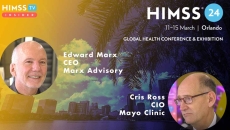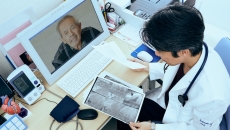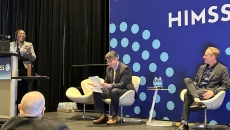Decision Support
It leverages Microsoft Azure GPT-4 to analyse and summarise verbal information and make automatic recommendations.
"We want to support our clinicians so they can sustainably serve our patients," says the health system's CHIO, who sees big potential for the EHR-linked generative AI tool to reduce administrative burden and alleviate burnout.
The new Office of Management and Budget policies will require "concrete safeguards" around the transparent and responsible use of artificial intelligence across government – including at the CDC, VA hospitals and other federal sites.
Authors of the new book "Diagnosed," Cris Ross, CIO of Mayo Clinic, and Edward Marx, CEO of Marx Advisory, talk about how their own experiences inspired this tome on patients taking charge of their healthcare journeys after difficult diagnoses.
"What data do you have? Where is it located? How do you get to it? And is the data fit for purpose? Data doesn't need to be perfect to be useful. But you don't ever want to use data that's not perfect and not know it."
In an update on several looming regulatory deadlines, the HIMSS Electronic Health Records Association said it asked ONC for enforcement discretion on a December 1 deadline.
Doing away with traditional manual coding has enabled Mount Alvernia Hospital's IT team to focus more on innovation rather than "reinventing the wheel," shares technology director Bruce Leong.
Its national research institute has built a chatbot based on Meta's LLM which can answer doctors' questions with up to 95% accuracy.
"We thought if we could bring more transparency to decision support intervention, we can instill more trust and we can help optimize the use of these algorithms."
Also, Bitsmedia's ex-CEO is joining telehealth company Doctor Anywhere as VP of Product.








